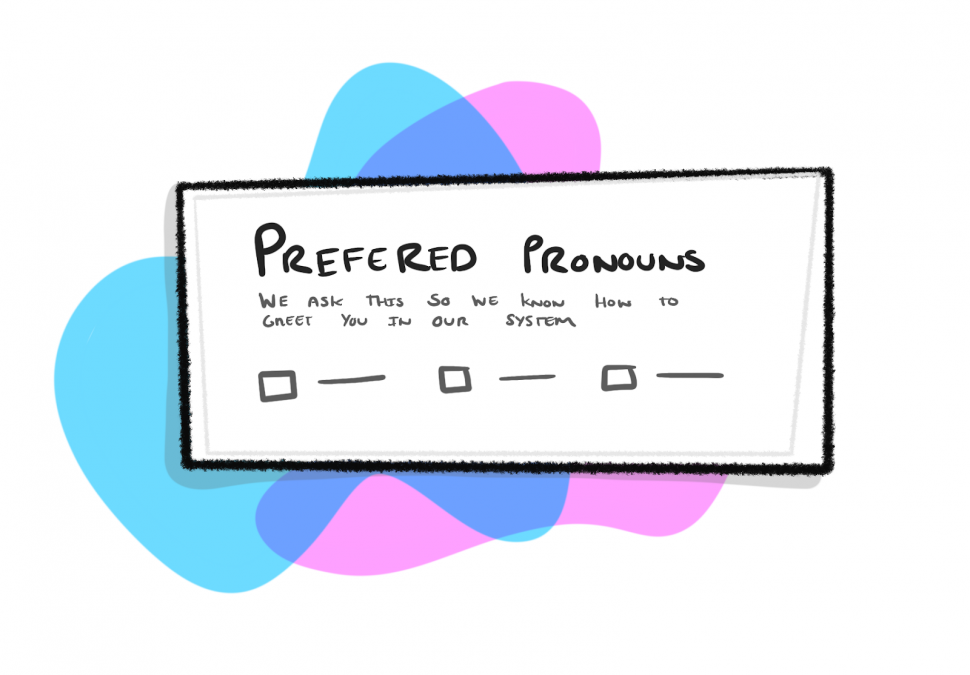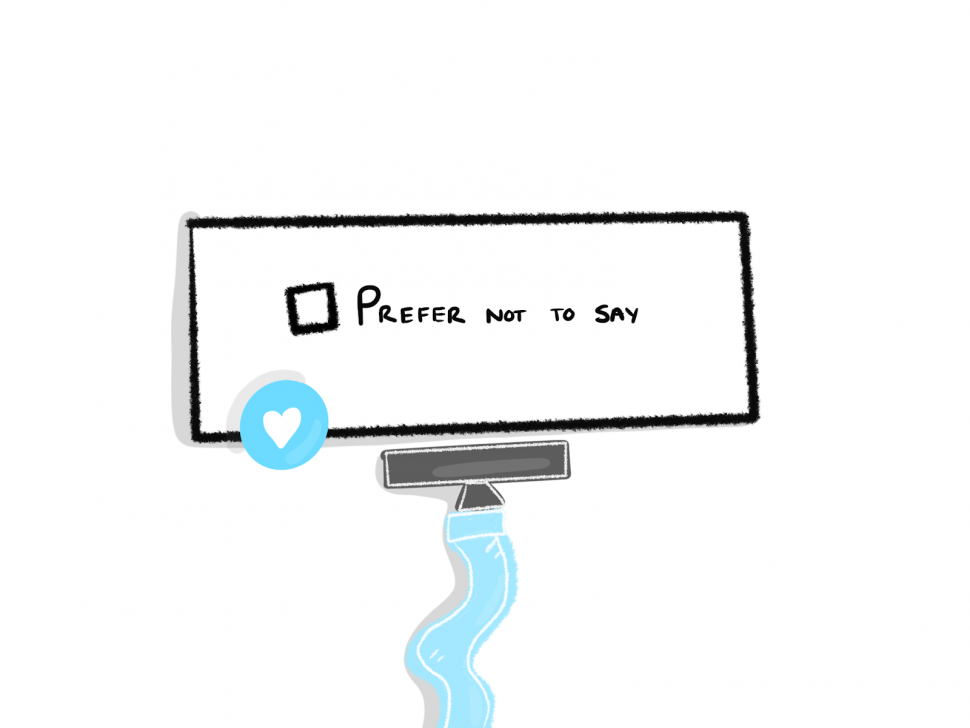
Approaching Gender in Software Products
It is a delight to use software that seems to really ‘get’ you as a person! To achieve this, it requires that the software has been built by people who sought out to understand their users. When software isn’t built with its users in mind, it has the potential to leave its users feeling alienated. In this post, we’ll be exploring a seemingly simple item we often put on forms that is very easy to get wrong: the gender field.
In software’s early days, it was not uncommon to treat gender as a binary that had a value for either male or female and call it a day. While many people will comfortably find that they belong to one of these two categories, there are plenty of people that don’t.
If you are too limiting in the choices you offer for gender, someone who doesn’t fit any of the choices you offer will likely feel alienated. You might make folks feel a little unwelcome, and if you require that they provide a response you are creating a situation where they need to lie about themselves to use your product.
Tacitly implying that someone isn’t a valid person because of their gender is a lousy first impression to make on anyone.
Sex Versus Gender
Before jumping into what makes a good design, we find it important to take a step back and revisit a more critical distinction. Far too often we see instances where gender and sex are conflated as one facet of the human experience, and thus, one form line.
It is important to note that these two concepts are fundamentally different and can change for a human over time. The reason to ask these questions from a user varies in the product space you are in. Regardless of that space, you will need to first address which of these questions – and why – to begin to create a more inclusive experience.
Design Patterns to Leverage
For either concept (gender or sex), there are a few design patterns we recommend you utilize.
Form headers & descriptions

This is already a pretty murky experience in most products for users. Do your due diligence by clearly labeling what you’re asking.
Tooltips

A key ingredient to inclusivity is transparency. If/when you identify why you are collecting this information, surface that reasoning to your users. (It can be as simple as “language to use in marketing emails” to “legal reasons for medical insurance providers”). This transparency buys you trust and also allows a user to provide the best answer in the edge case the design of the form fields isn’t fully inclusive.
Other [as a free form field] alongside any radio/dropdown

There are two good reasons to include this. First, as gender expression is a spectrum and identities change over time it is best practice to assume you might not identify every single expression. Secondly, if you were to do the homework to include every single expression, you are likely going to end up with a very very long dropdown that will be annoying to use and overall bad UX.
“Prefer not to disclose” option

There are a variety of reasons a user might not want to disclose (from privacy to fears of discrimination). If you make this form field required as part of a signup process – it is strongly recommended that you allow them to avoid disclosing that data. This is not only ethical, but also prevents bad data collection.
Our Recommended Guidelines
- Always start by asking – why do you need this? Then ask again. Chances are your product will function just as well without collecting this information.
- Consider asking about pronouns instead of gender identity. This will usually get the info you need for most marketing (copy) related goals.
- You will not come up with every possible value for gender (nor should you try to); always let users self-identify with a free text field.
- Adding pre-existing choices for male and female will save most people some typing, but it subtly implies that people who are male or female are first class citizens by giving them an easier way to fill it out. If everyone is filling in an empty free text field, it puts all users on equal footing (and with a little extra work, it’s not that difficult to organize the data).
- If your gender field has options to select, don’t add options for being transgender; it implies that trans men and women are a different gender than cis men and women. If your application has a specific need to ask about trans status, ask in a separate question.
- Not everyone is comfortable filling this in, so allow it to be left blank.
- Be transparent on why you are asking.
- If working with multiple languages, place extra emphasis on translation, localization, and sensitivity to cultural norms.
- Store this data carefully (not shared without the consent of the individual) and securely.
- Make this information editable. People may need to change this information over time.
Behavior
If you’ve decided to collect this data then presumably you have plans to use it for something. If your application is going to behave differently depending on a user’s gender, be mindful about how you do this.
For example, if your application asks for information about someone’s spouse, don’t automatically assume the spouse is a different gender!
Even things that seem inextricably tied to one gender aren’t always so. You might be building a health tracking app and you may assume that menstrual cycle tracking need only be shown to women, but there do exist men who have menstrual cycles.
If you are interested in learning more, here is some fantastic material to get you started:
- Falsehoods Programmers Believe About Gender
- Schemas For the Real World
- Human Rights Campaign Article on Collecting Gender Data (Workplace Specific)
Every time you make a decision for your product that will make it work for most people, you are implicitly also making a decision to make your product not work for another group of people. With each choice you make that does this, one by one you gradually keep shaving down the number of people who feel welcome using your product.
Gender has a lot of importance to almost all cultures of the world for a variety of reasons, and the reality of human life is that it doesn’t always fit neatly into discrete categories that are friendly to computers. When we build products, it’s worth taking the extra time to make our products accommodating to humans to make them feel welcome. If you haven’t been giving this as much thought in your product designs as you should, making your product gender inclusive is a fantastic place to start.
Illustrations by Lo Wheelwright.